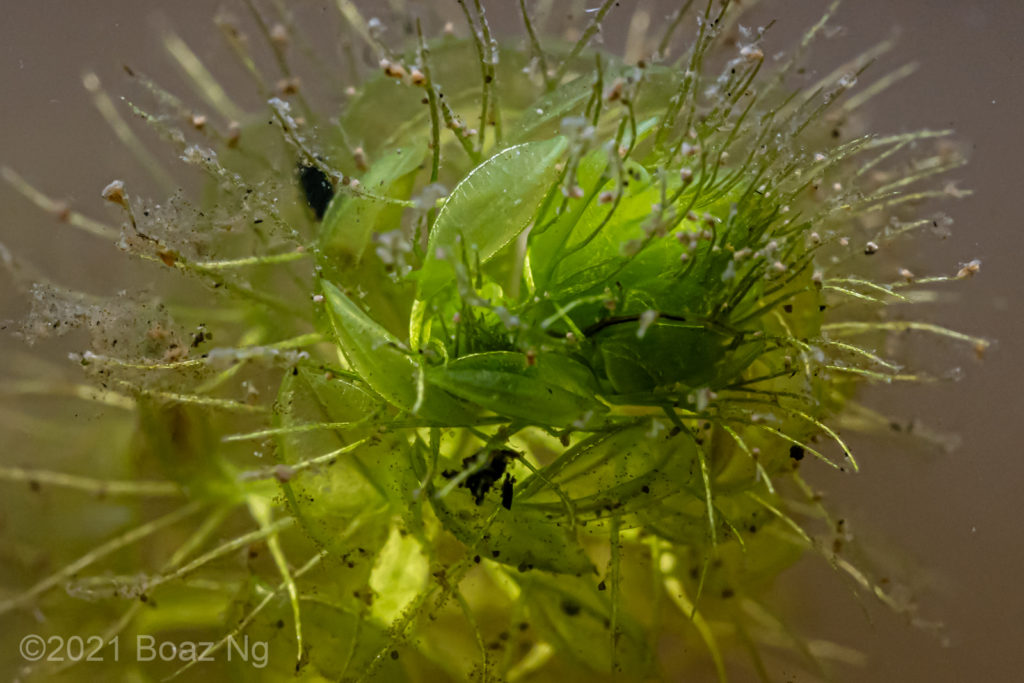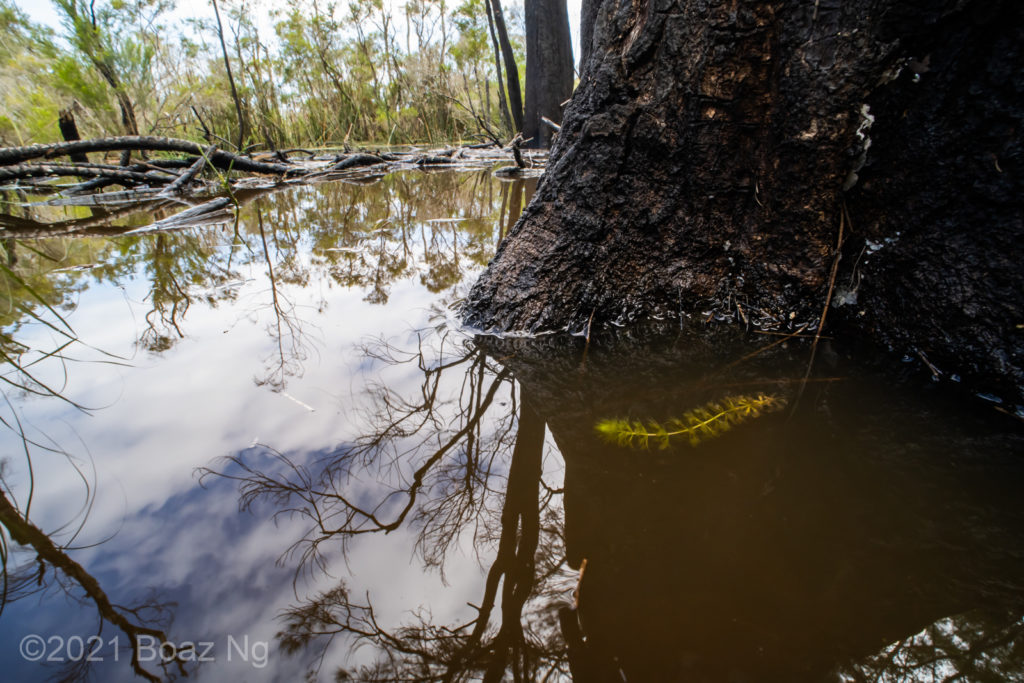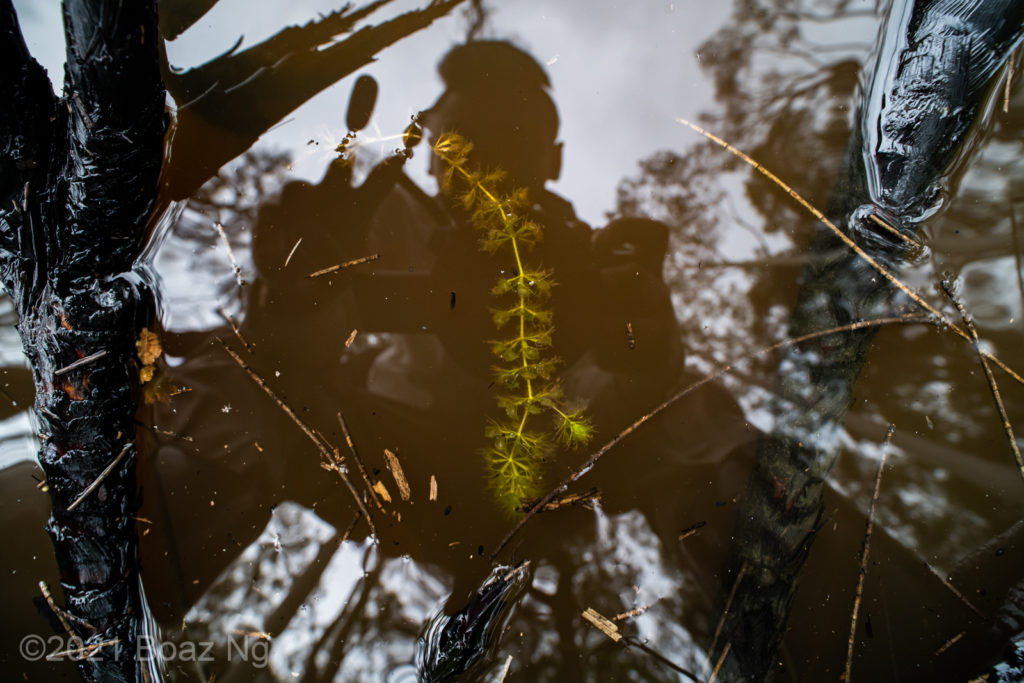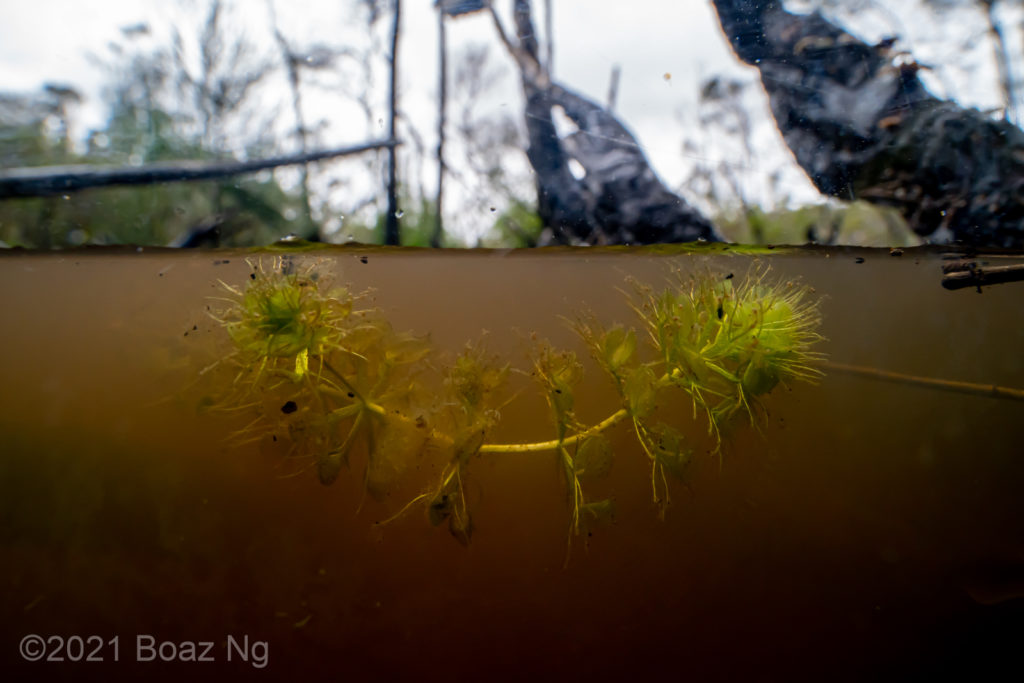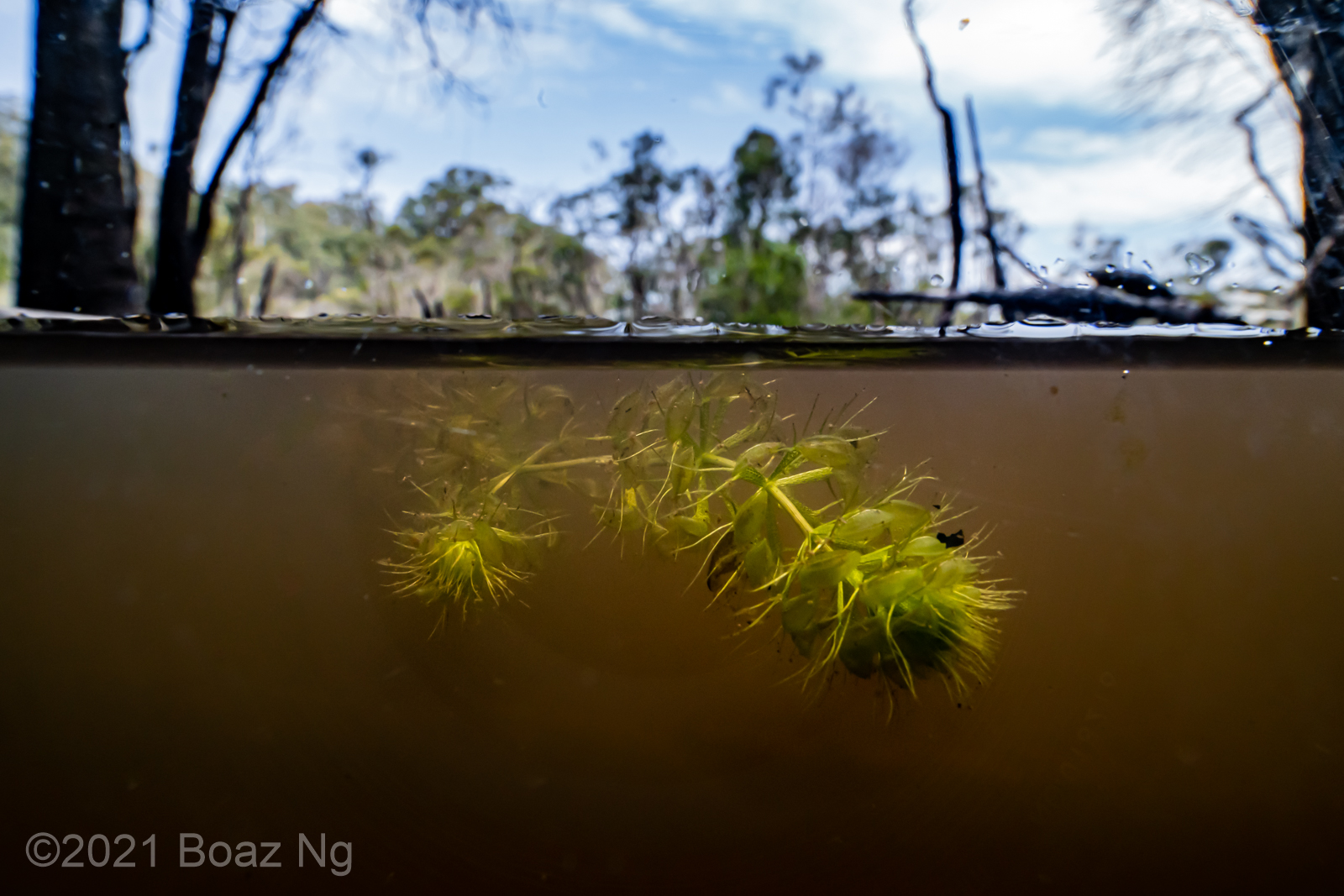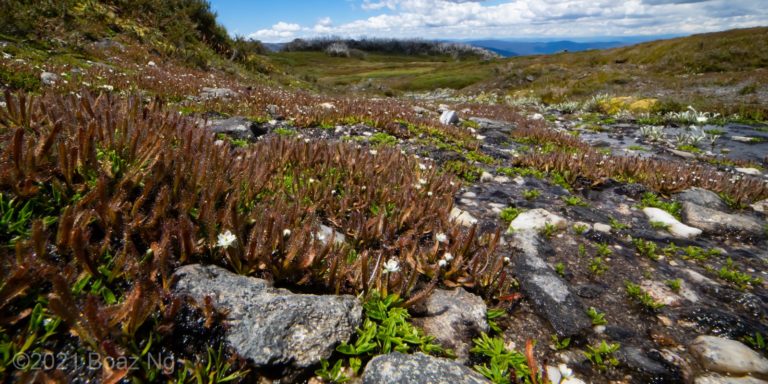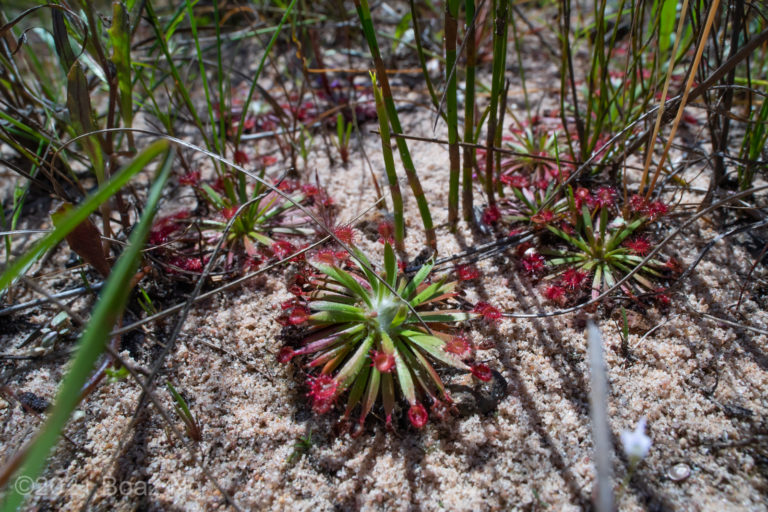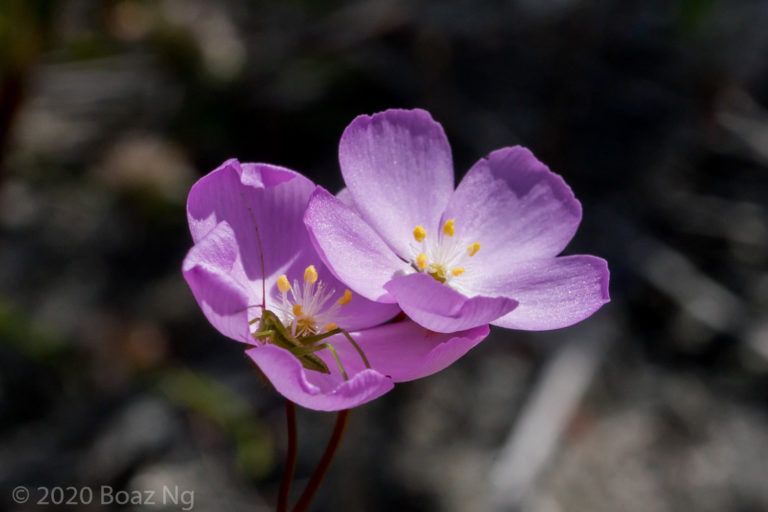Aldrovanda vesiculosa – the waterwheel plant – is the aquatic cousin of the Venus Fly Trap, with underwater snap traps that are formed in whorls along a floating stem.
Aldrovanda grows as a free-floating aquatic plant with regularly spaced whorls of leaves that emerge from a central stem. Each individual leaf is composed of a straight, flattened petiole with long outwards-pointing bristles at the connection with the lamina. The lamina forms the snap trap, with two clam-shell like lobes that are led open when the trap is set. Minute sensory bristles line the inside surface of the lamina and cause the trap to snap shut when touched. The outer edge of the lamina is lined with small tooth-like bristles to hold any trapped prey in place.
As the stem grows, it tends to divide regularly into two growth points. Meanwhile, the main stem readily dies until it frees the two substems into separate plants. In temperate climates, the species grows a tightly packed bud of leaves when the weather cools down. This bud sinks to the bottom of the water over its dormancy period.
I observed Aldrovanda on the south coast of NSW, eastern Australia, where it inhabited the edges of a large freshwater lake. In Australia, it is most prevalent in warmer climates where extensive wetland systems are more common. The species is one of the most widely distributed carnivorous plants, with representations in all continents except Antarctica but is listed as endangered.
